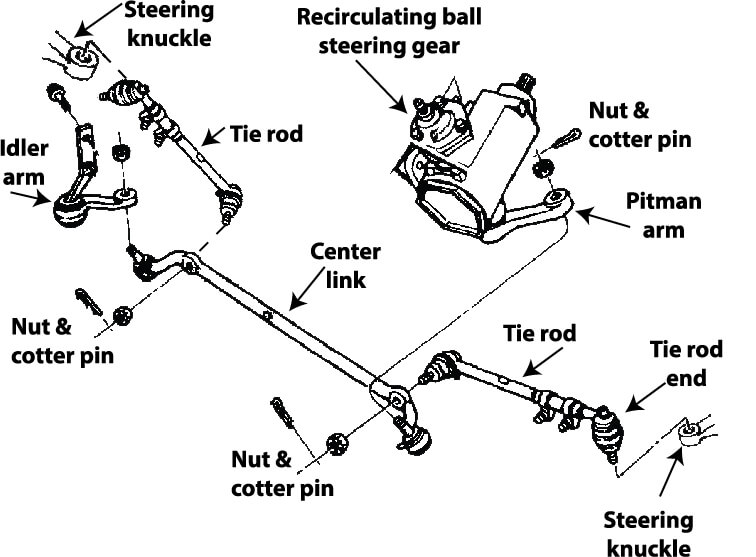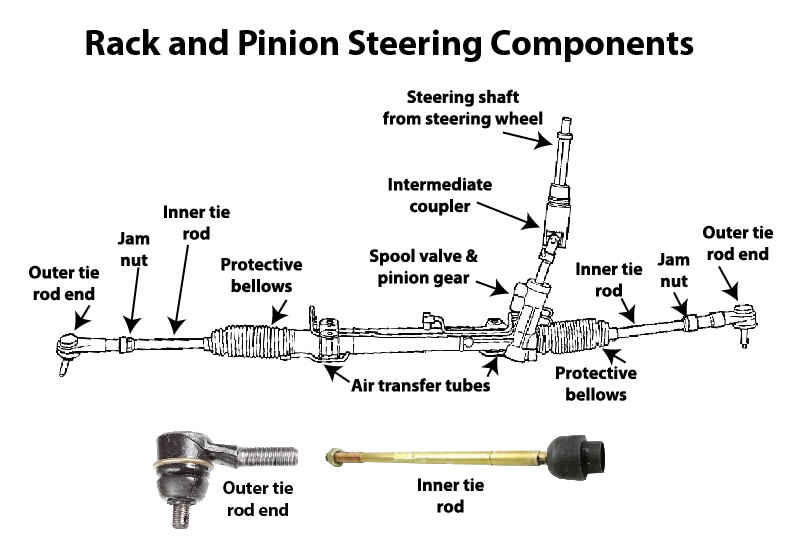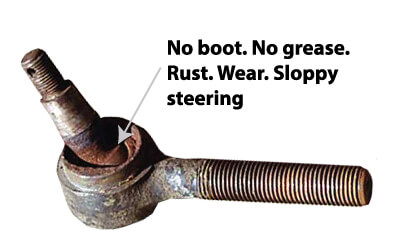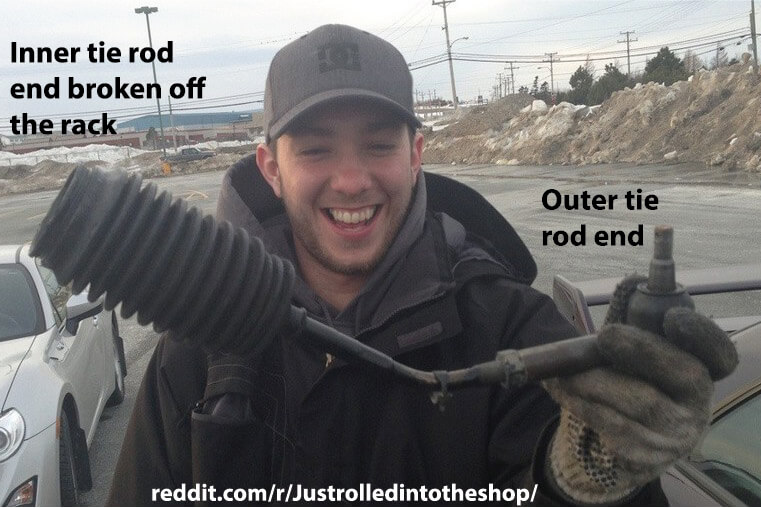What is a tie rod?
Understanding the Role and Function of Tie Rods in Steering Systems
A tie rod is a steering linkage component used to connect the steering gear to the steering knuckle. Most tie rods have one threaded end and an opposite end with a ball joint. The tie rod itself doesn’t wear, it’s just a steel rod. But the ball joint does wear. Many consumers mistake a drag link or center link for a tie rod, but they’re not the same. Here’s a parallelogram steering system diagram with a recirculating ball steering gear and idler arm.

Typical parallelogram steering gear setup showing center link, tie rod, tie rod ends and idler arm
Steering linkage used in rack and pinion steering
Rack and pinion steering systems have an inner tie rod on each side of the steering gear. The portion connected to the rack has a ball joint to allow for up and down movement on bumps and arc movement during turns. The inner rod has a ball joint style that connects to the steering knuckle. The end allows for up-and-down movement over bumps and pivoting during turns. Here’s a diagram showing the steering components on a rack and pinion style steering system.

Where the inner tie rod and outer tie rod ends are located on a rack and pinion steering gear
What goes wrong with inner and outer ends?
The ball joint in the inner and outer end is permanently greased and sealed at the factory. The seal can be a rubber boot or a metal cap. Over time, the seal can fail and allow water inside the joint, causing the grease to degrade and fail. Plus, ordinary movement causes the grease to break down and fail. At that point the ball stud wears into the bearing causing “play” in the vehicle’s steering.
Other ends have field greasable fittings that require routine refilling. Owner neglect can cause premature joint wear and improper greasing technique can cause the seal to rupture and allow water penetration.
Tie rods transfer tremendous force from the steering gear to the steering knuckle, especially when the driver turns the wheels when the vehicle isn’t moving, like in parking maneuvers. If they’re not lubricated, they’ll wear out.
Worn tie rod end symptoms
• A knocking sound when turning at slow speeds, especially during parking maneuvers.

An example of a worn tie rod end that’s rusted and causing sloppy steering
• A squeaking noise when turning or hitting bumps is a sign that the tie rod end is bone dry
• There is a loose feeling or slack in the steering system. When turning the steering wheel, you’ll notice a slight delay between the time you input the change and the wheel’s response.
• Vehicle wander. You will notice that you must constantly correct the steering wheel to maintain a straight heading.
• The steering wheel shakes when you hit bumps
• The tire tread blocks are “feathered,” with a larger depth on the trailing edge of the tread block. In addition, since worn tie rod ends affect “toe” alignment, they can also cause tire cupping. This is due to the fact that the front of the tire is pointed slightly in toward the center of the vehicle or out.
• Tire wear on the inside or outside of the tire. This type of wear can also be caused by improper camber.
• The vehicle exhibits a constant pull to one side.
• Break or bent due to impact

Curb impact broken inner tie rod end off the end of the steering rack
How to check for wear?
Raise the vehicle and place it on jack stands. Holding the tire at the 3:00 and 9:00 positions, wiggle the tire while watching for movement at the inner and outer ends. There should be no noticeable movement. Also, push up and down on the outer unit to check for play. Any play is a sign of a worn tie rod.
How to avoid steering repair scams
Quick lube places often provide a video of the free inspection they’ve done on your car. A common scam is to rock the outer tie rod forward and backward and tell you it’s worn. However, all outer ends are supposed to rock forward and backward. It’s a ball and socket arrangement so that forward/backward rocking motion is normal. The only way to check for play is to push up and down on the outer end.
If the shop is trying to convince you to replace an outer end due to forward/backward rocking, you’re being scammed.
To learn more about steering systems replacement cost see these posts:
For more information on power steering fluid, read this post
For more information on tie rod replacement cost, read this post
For more information on rack and pinion replacement cost, read this post
©. 2017 Rick Muscoplat
Posted on by Rick Muscoplat
